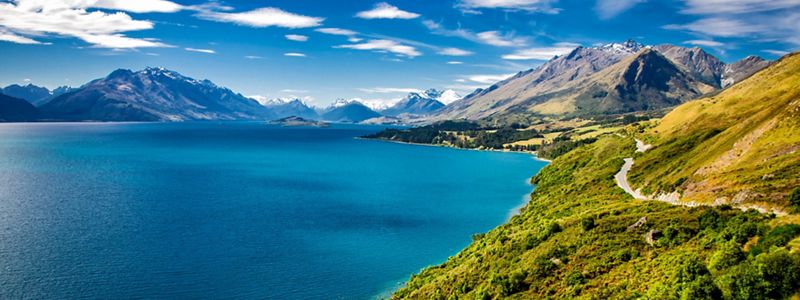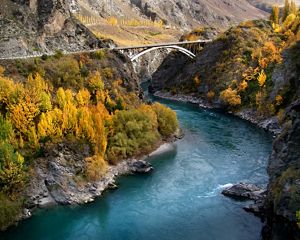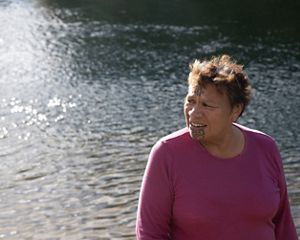A Passion for Peat
Research on Rēkohu/Wharekauri—Carbon Credits and Landowners
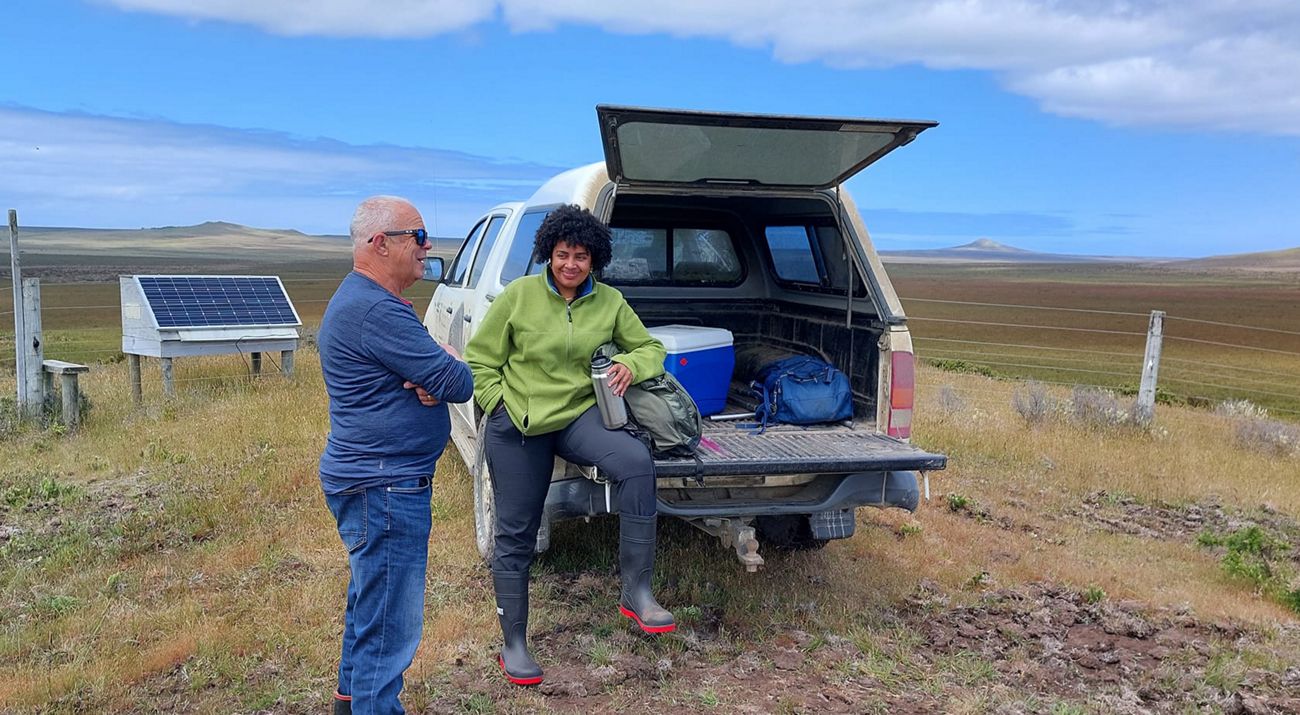
Currently based in the Netherlands, Rabia Sheikh, a chemistry graduate from the University of North Carolina in the U.S., recently completed her master’s thesis through Radboud University, exploring the influence of carbon credits on landowners’ decision-making. Initially, Rabia was planning to pursue dentistry; however, following her undergraduate studies, the pull to contribute more to humanity and the environment led her down a new path.
“In the States you need to have prerequisites for your chosen field, and for dental school, a lot of those were in chemistry. At the time, I figured if I didn’t choose to go in that direction, then at least you can do a lot with a chemistry degree. In my last year I decided I didn’t want to become a dentist—I didn’t feel like I was doing enough for the world, so I’m going to do sustainability!”
Her master's brought her all the way across to Aotearoa New Zealand, focusing on Rēkohu/Wharekauri/Chatham Islands, where she explored the carbon locked up in the peatlands, the climate impact of carbon being released and what changes could be made in agriculture and fishery practices on the island to address this.
Quote: Rabia Sheikh
I think the biggest impact of this preliminary research, and with further research into the feasibility of carbon credits for peatland restoration, is that the Rēkohu/Wharekauri community will be able to decide which farming practices they want to pursue and which income sources are more viable.
Whilst still in the Netherlands, Rabia reached out to The Nature Conservancy Aotearoa New Zealand (TNC NZ) after seeing the early work on their blue carbon project. A few months later, TNC NZ was able to support Rabia with office space and additional supervision from Olya Albot, programme manager for nature-based solutions, and Amy Satterfield, conservation programme systems manager. TNC NZ also provided field support with help from Kaeli Lalor (a TNC secondee). Crucial local support came in the form of the Chatham Island Landscape Restoration Trust, who advised on site selection, helped secure land access, supplied a vehicle for use and acted as a field guide. This research was fully funded by Agri Concepts Ltd, through a Ministry for Primary Industries Essential Freshwater Fund.
Rabia shared some reflections from the research to increase understanding of the Rēkohu/Wharekauri peatlands. The findings are very encouraging, but it is very early days, and further work would need to take place for carbon credits to generate revenue to support restoring peatlands on the island.
Rēkohu/Wharekauri landowners were looking for support in their sustainability practices, so they were very open to the work, particularly given the impact of COVID.

Peatlands make up over 60% of the island. Improving land management practices and having alternative land use options is important for a remote island community that primarily relies on fisheries and agriculture.
Rabia chose peatlands because of their significant climate contribution. Peatlands are a type of wetland, where the soil is made up of very slowly decaying plants. They can potentially store four to five times more carbon than forests, though they only occupy about 3% of the world’s landmass. Peatlands slow down plant decomposition because they are so wet, and they capture and lock away carbon over a long period of time, keeping it out of the atmosphere. When they are drained for agricultural practices, they release greenhouse gases like carbon dioxide, methane and nitrous oxide, which significantly contribute to climate change.
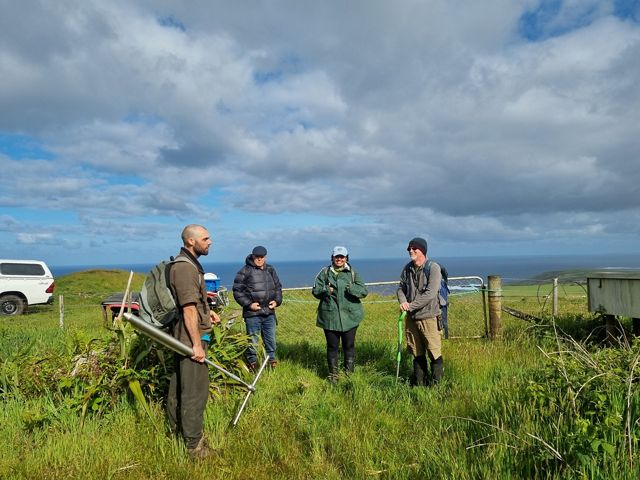
For Rabia, it’s about finding balanced and sustainable solutions that support restored peatland and continued sensitive agricultural practices.
One potential avenue for this is finance generated from carbon credits, as The Nature Conservancy is already doing in Indonesia, for example. By calculating the carbon stored in peat soils, and identifying how much carbon is currently being emitted, landowners on Rēkohu/Wharekauri could eventually be paid to keep that carbon locked away by restoring their peatlands, preventing them from emitting greenhouse gases.
Although It Is Small, It Is a Treasure
The Māori saying “Ahakoa he iti, he pounamu” translates to “Although it is small, it is greenstone”.
Although New Zealand only has 1% of the world’s peatlands, they are incredibly special because of their unique ecosystems and the habitat for species that they provide. TNC NZ is currently exploring how we might be able to use carbon markets, alongside other forms of funding, to encourage peatland restoration to benefit nature, climate and people.

Rabia says, “Farmers are trying to pivot from traditional farming practices because they’re not earning much from those agricultural practices. They also want to move more toward a sustainable practice to clean their fresh waters. This research could be the start of an important conversation about alternative land uses.”
There can be scepticism attached to carbon credits, or profiting from sustainability, even for Rabia herself. This is also common in Indigenous groups, where kaitiakitanga or guardianship is an inherent belief system when it comes to humanity’s relationship with the natural world. TNC NZ is committed to developing high-integrity carbon markets aligned to international best practice standards.
Rabia found that her preconceptions of farmers being opposed to changing practices really shifted when she went to Rēkohu/Wharekauri. Many of them had been involved with conservation before and were excited for the potential to earn carbon credits through restoring peatlands.
Quote: Rabia Sheikh
This research could be the start of an important conversation about alternative land uses.
Elsewhere in New Zealand, peatlands are restored by blocking drains to rewet the soil. The main hurdle for peatland restoration on the island is protecting them from livestock through fencing because excessive trampling on the soil generates more emissions. The initial costs for restoration would be significant, including sourcing fencing materials from the mainland, weed control and required hydrological and greenhouse gas monitoring.
However, the motivation for the majority of landowners she interviewed wasn’t about making money but rather how they can live in a more sustainable way and protect nature for future generations. Some farmers were already involved in carbon farming practices or aware of carbon credits, so they knew what the benefits could be.
“I think the biggest impact of this preliminary research, and with further research into the feasibility of carbon credits for peatland restoration, is that the Rēkohu/Wharekauri community will be able to decide which farming practices they want to pursue and which income sources are more viable.”
More About Restoring Peatlands
Learn more about TNC NZ’s work on restoring peatlands.
We Can’t Save Nature Without You
Sign up to receive monthly conservation news and updates from New Zealand.
